Murcia’s vibrant culture comes alive on this guided walking tour. Visitors can explore the city’s historic streets, admiring architectural gems like the stunning Murcia Cathedral and opulent Episcopal Palace. The highlight? Wandering through the bustling Veronicas Food Market, savoring the aromas of fresh produce and regional specialties. After working up an appetite, guests can even learn to prepare authentic Murcian dishes in a hands-on cooking class. This immersive experience blends history, culture, and gastronomy – a tantalizing introduction to Murcia’s rich heritage.
Key Points
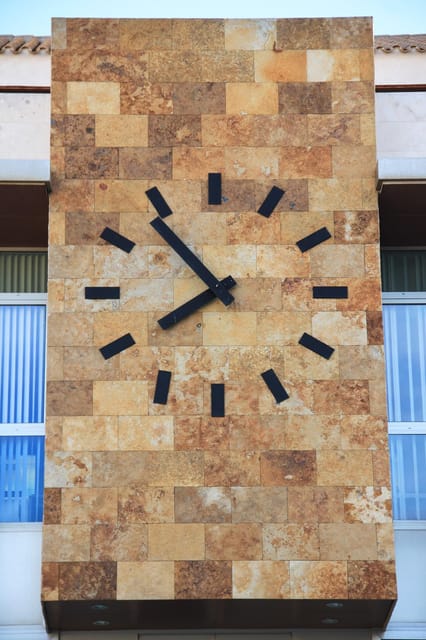
- Explore the iconic 18th-century Bridge of Hazards, a symbol of Murcia’s resilience with picturesque views over the Segura River.
- Visit the Monument to the Burial of the Sardine, commemorating Murcia’s annual festival and capturing the city’s vibrant cultural traditions.
- Admire the Rococo architectural splendor of the Episcopal Palace of Murcia, which houses a diocesan museum showcasing religious art.
- Marvel at the 14th-century Gothic Murcia Cathedral, a blend of architectural styles and a testament to the city’s rich cultural heritage.
- Enjoy the lively atmosphere of the Veronicas Food Market, indulge in regional specialties, and explore the well-preserved medieval Traperia Street.
Exploring the 18th-Century Bridge of Hazards

As you begin the guided walking tour of Murcia, one of the first highlights you’ll encounter is the captivating 18th-century Bridge of Hazards.
This iconic symbol of resilience offers picturesque views over the Segura River. Though originally built in the 1700s, the bridge’s unique arched design and intricate stonework have endured the test of time.
Your guide will share the fascinating history behind the bridge’s name and explain how it has become an integral part of Murcia’s cultural identity.
Prepare to be captivated by this striking landmark as you kick off your exploration of the city’s rich heritage.
You can also read our reviews of more tours and experiences in Murcia.
The Monument to the Burial of the Sardine
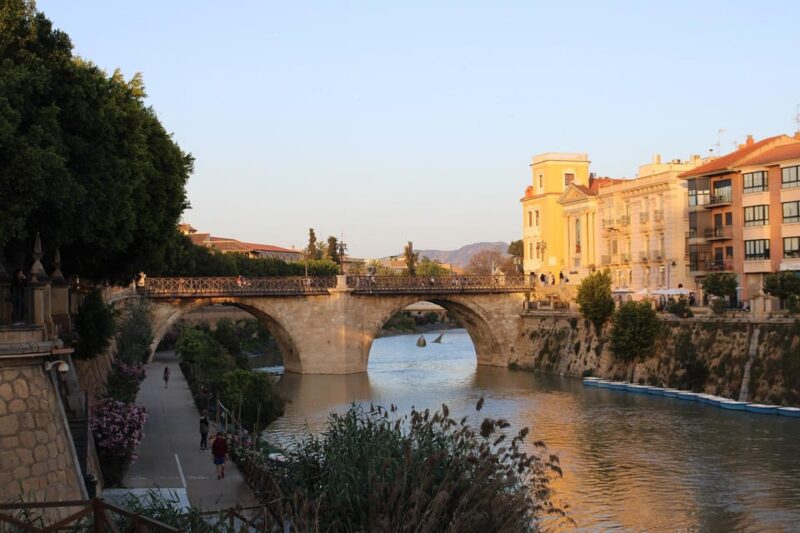
Next on the guided walking tour is the Monument to the Burial of the Sardine.
This monument represents Murcia’s history and cultural traditions. It commemorates the annual Burial of the Sardine festival, a lively celebration marking the end of the carnival season.
The monument features a bronze sculpture depicting the burial of a sardine, a symbolic ritual that dates back centuries. Participants will learn about the significance of this festival and its role in Murcia’s vibrant cultural heritage.
The monument serves as a focal point for photographs, allowing visitors to capture the essence of the city’s festive spirit.
Admiring the Episcopal Palace of Murcia
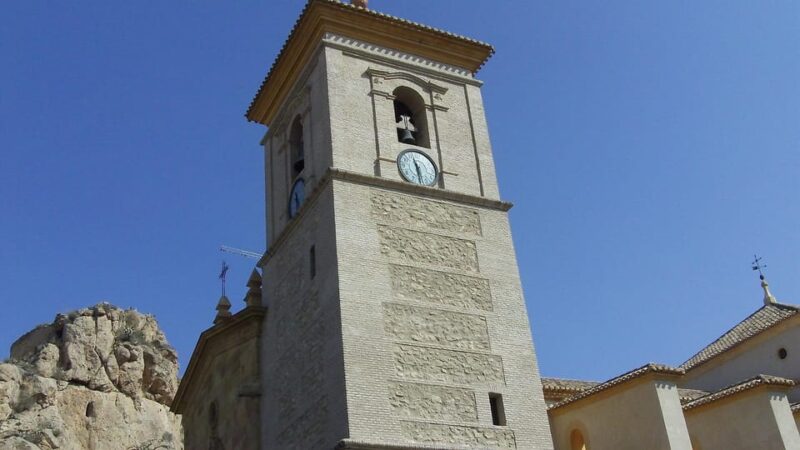
Continuing on the tour, the group now admires the Episcopal Palace of Murcia.
This Rococo architectural gem features exquisite decorative details. Ornate facade, intricate carvings, and ornamental balconies captivate the visitors. The palace was the former residence of the Bishop of Murcia.
A Rococo architectural marvel with exquisite decorative details, ornate facade, intricate carvings, and ornamental balconies captivating visitors.
Today, it houses the diocesan museum, showcasing religious art and artifacts. The group marvels at the palace’s opulent interiors and elegant proportions.
They take in the splendor of this historic landmark, a testament to the city’s rich cultural heritage. The guide provides insights into the palace’s significance and its role in Murcia’s history.
Marveling at the Murcia Cathedral
The group’s attention is then drawn to the towering Murcia Cathedral, a 14th-century Gothic masterpiece with captivating Baroque elements.
The cathedral’s soaring architecture and intricate details leave the visitors in awe. They admire the second-highest tower in Spain, which stands as a testament to the city’s rich history.
The guide explains the cathedral’s significance, noting its blend of architectural styles and the remarkable craftsmanship evident in the decorative elements.
The group takes time to appreciate the cathedral’s grandeur, snapping photos and contemplating the sheer scale and beauty of this iconic landmark.
More Great Tours NearbyDiscovering the Veronicas Food Market
After exploring the city’s historic landmarks, the group ventures towards the vibrant Veronicas Food Market.
This local market is a hub of activity, filled with stalls selling fresh produce, traditional foods, and regional specialties.
The group navigates the bustling aisles, taking in the lively atmosphere and enticing aromas. They browse the colorful displays of fruits, vegetables, and local delicacies.
Navigating the bustling aisles, the group takes in the lively atmosphere and enticing aromas, browsing the colorful displays of local delicacies.
Some travelers opt to join a cooking class, where they learn to prepare authentic Murcian dishes.
The market offers a glimpse into the culinary culture of the region, complementing the architectural and historical discoveries of the guided tour.
Strolling Through Cardinal Belluga Square and Traperia Street
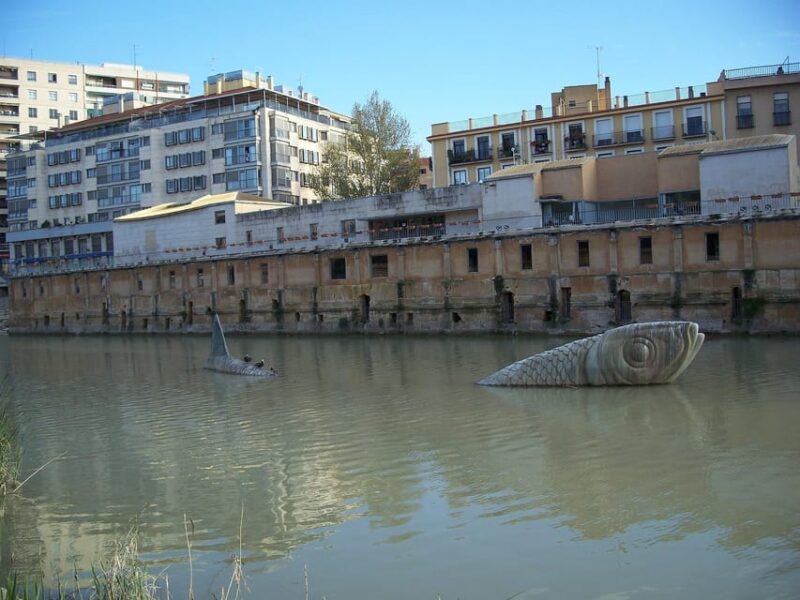
As the group departs the vibrant Veronicas Food Market, they find themselves in the serene Cardinal Belluga Square. This elegant plaza is surrounded by baroque buildings, creating a peaceful atmosphere. The group strolls along the medieval Traperia Street, marveling at the well-preserved architecture that reflects Murcia’s history. The narrow lanes and cobblestone pathways transport them back in time, allowing them to envision the hustle and bustle of urban life centuries ago.
| Cardinal Belluga Square | Traperia Street |
| — | — |
| Baroque buildings | Medieval architecture |
| Peaceful atmosphere | Cobblestone pathways |
| Tranquil setting | Glimpse of past urban life |
| Photo opportunities | Historic ambiance |
| Transition from market | Immersive experience |
Flower Square and the Bronze Sculpture
Leaving the medieval charm of Traperia Street, the group now arrives at Flower Square, a vibrant plaza renowned for its abundance of flower stalls and lively tapas scene.
The focal point of the square is a bronze sculpture depicting a symbolic figure, often photographed by visitors. The guide explains the sculpture’s significance, relating it to the city’s history and culture.
As the tour continues, the group takes in the lively atmosphere, with locals and travelers alike browsing the colorful flower displays and sampling the delectable tapas on offer at the surrounding cafes and bars.
Uncovering the Remnants of the 12th-Century Hispano-Muslim City
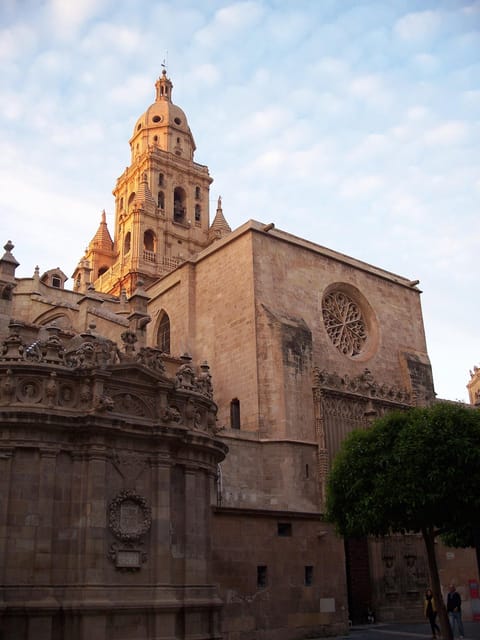
After exploring the lively Flower Square, the walking tour turns its attention to the remnants of Murcia’s 12th-century Hispano-Muslim city.
Visitors discover the Veronicas Wall, the last vestiges of the ancient fortifications that once surrounded the medieval city.
The guide explains the architectural features and historical significance of these ruins, transporting participants back in time to visualize the vibrant urban center Murcia once was.
Standing before the weathered stone, travelers gain a deeper appreciation for the city’s rich cultural heritage and the enduring resilience of its past.
Frequently Asked Questions
Are There Any Restrooms Available During the Walking Tour?
According to the information provided, the guided walking tour does not explicitly mention the availability of restrooms during the tour. Visitors should plan accordingly and check with the tour operator for any restroom facilities along the route.
Can We Stop for a Short Break During the 2-Hour Tour?
The tour includes a 2-hour duration, but there are opportunities to take short breaks as needed. Participants can speak with the guide about any specific requirements or needs they have during the walking tour.
Is the Tour Suitable for Families With Young Children?
The tour is suitable for families with young children. It offers an engaging walking experience, with stops that may interest kids, though the 2-hour duration may be challenging for some families. Comfortable footwear and breaks are recommended.
What Is the Maximum Group Size for the Walking Tour?
The maximum group size for the walking tour is 20 participants. The tour price is from £292.03 per group, regardless of the number of people in the group (up to 20).
Are There Any Dietary Restrictions the Tour Can Accommodate?
The tour doesn’t mention any specific dietary restrictions it can accommodate. However, participants can explore the Veronicas Food Market, which offers a variety of fresh local produce and cooking classes.
The Sum Up
This guided walking tour of Murcia offers a captivating blend of history, culture, and gastronomy. Visitors can marvel at the city’s architectural wonders, enjoy the vibrant Veronicas Food Market, and even learn to prepare authentic Murcian dishes. It’s an enriching experience that showcases Murcia’s vibrant heritage and invites travelers to savor the essence of this charming Spanish destination.
You can check availability for your dates here: